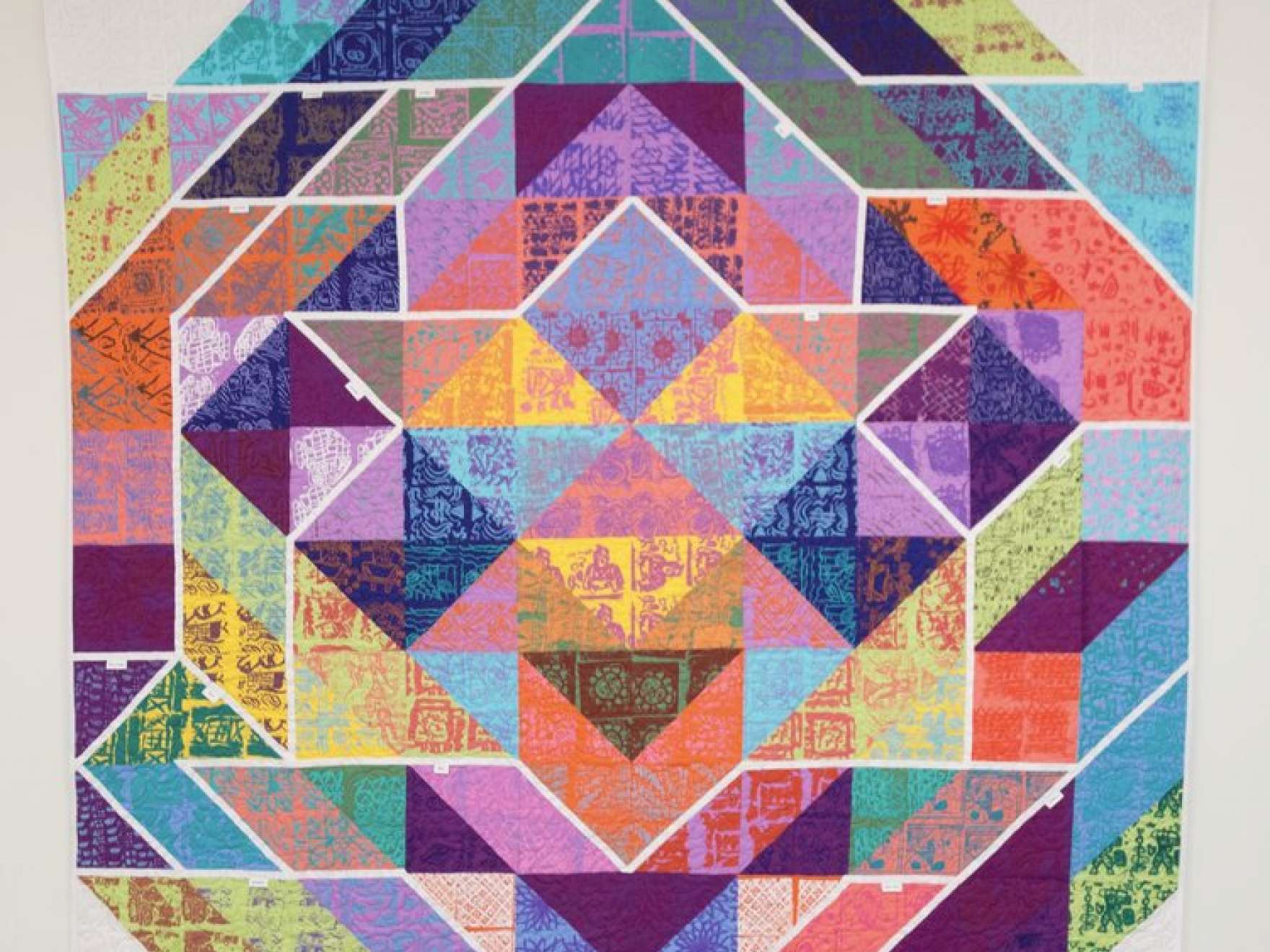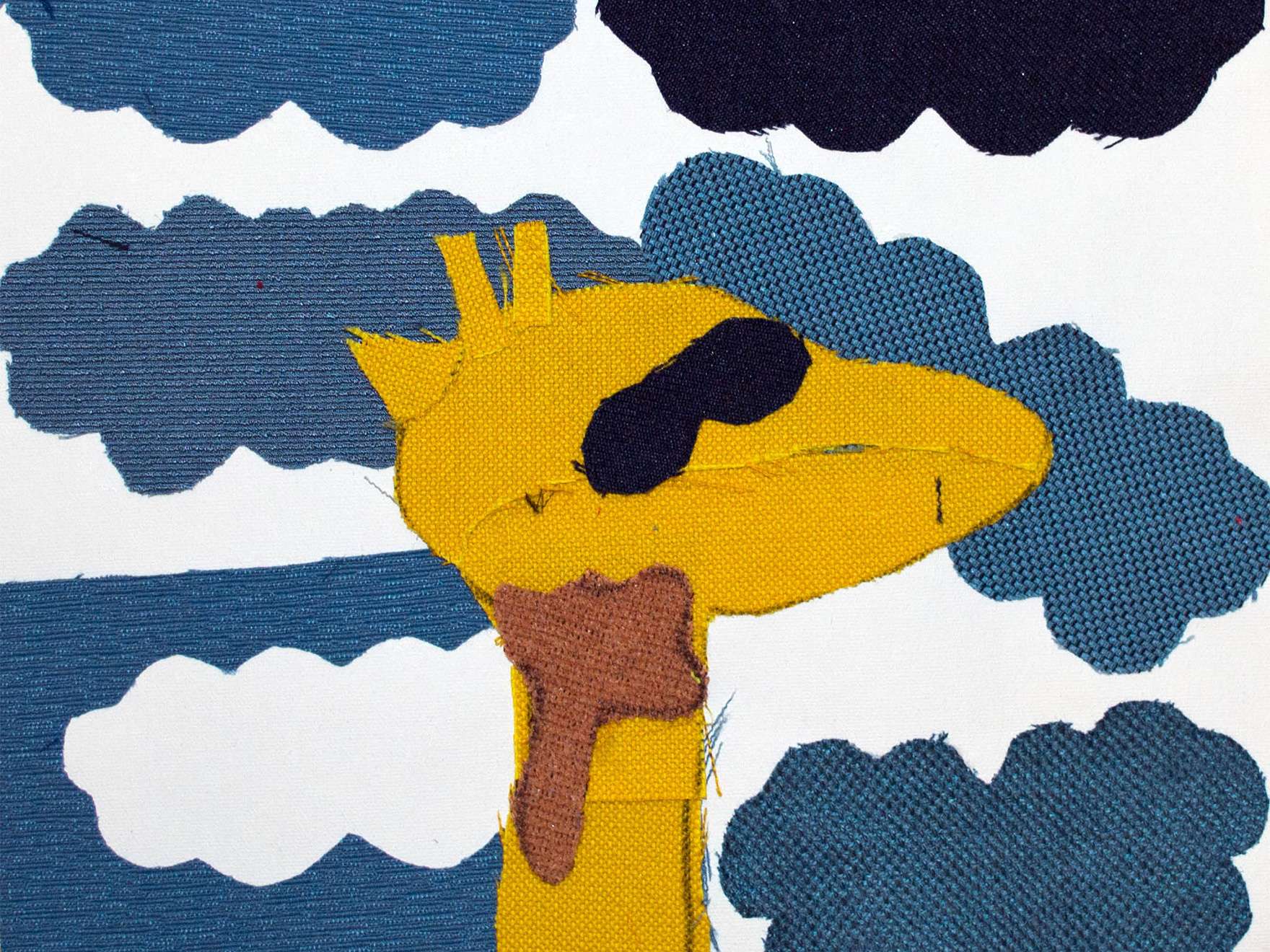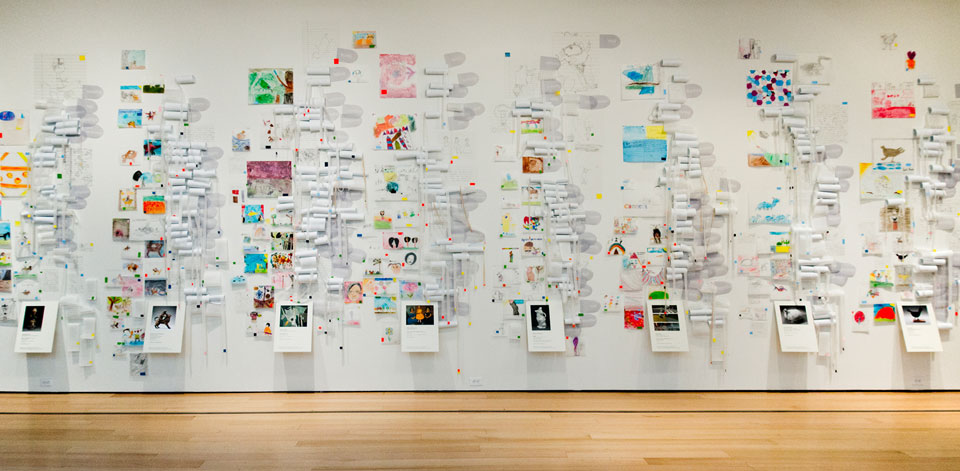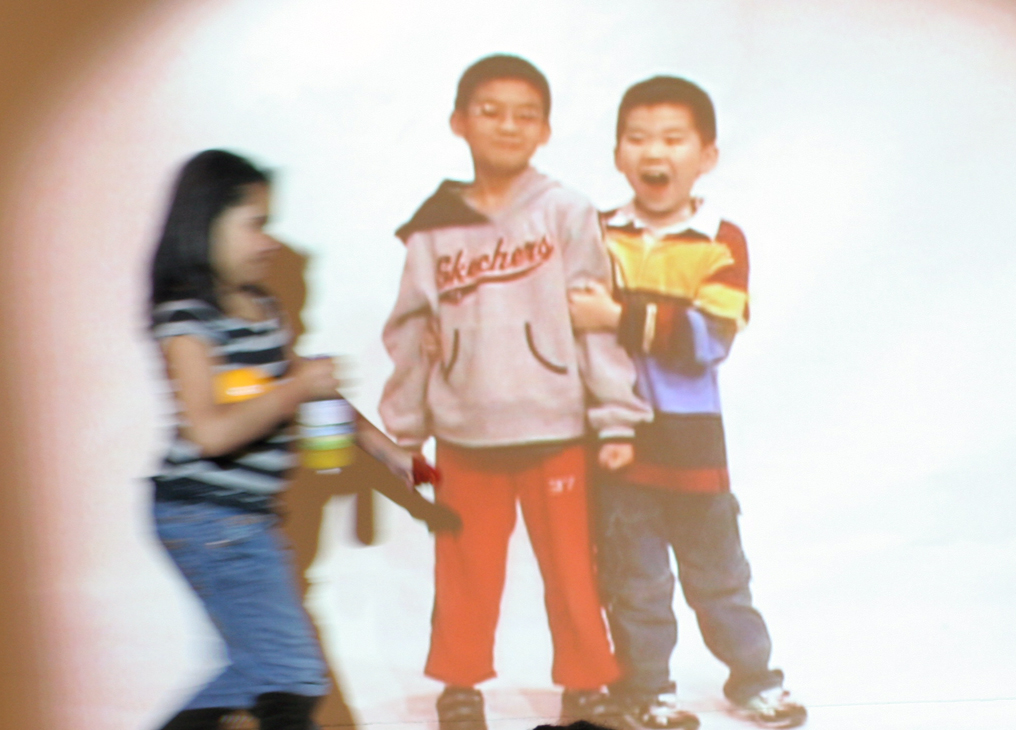Second Hands

Students from the Museum’s ten Community Arts Initiative partners visited the MFA with artist Maria Molteni to create a multifaceted artwork inspired by the MFA’s collection and the global community of makers. Students selected items from a variety of vibrant garments acquired from second-hand stores in the Boston area, checked the tags to find where their garments were made, and then explored those areas of the world via the Museum’s collection. Using artwork from those places as inspiration, the students designed their own original patterns.
"Second Hands" exhibition page
Elemental

Over the course of a school year children visited the MFA six times and met with artist Hilary Zelson to learn about six elements found in every object and painting in the Museum’s vast collection: line, shape, form, value, color, and texture. As part of their visits the students took photographs and created artworks that demonstrate both their creativity and their new knowledge of how these elements are incorporated into art.
Experiments in Animation

Children from eight after-school community organizations in the Boston area explored the MFA with artist/animator Jake Fried and experimented with the art of animation. Inspired by the Museum's vast collections, the students collaborated on multiple stopmotion films reflecting on their communities and creating imaginary worlds. Each film demonstrated a different animation technique that they learned and experimented with in order to bring their art to life.
"Experiments in Animation" exhibition page
Characters in the Collection

Under the guidance of artist Andrew Oesch students from eight after-school community organizations in the Boston area explored museum objects and imagined paths from these works of the past to their own contemporary comics and sequential art pieces. Through a series of drawing and writing exercises, they also discussed what life could be like living with these artifacts.
"Characters in the Collection" exhibition page
Fresh Eyes

Under the guidance of artist Hannah Burr, students from eight after-school community organizations in the Boston area responded to works from the MFA’s encyclopedic collection. Through the students’ drawings, audio recordings, and transcriptions, “Fresh Eyes” demonstrated how personal and infinitely varied responses to a work of art can be. Hannah Burr presented the students’ theories, questions, declarations, descriptions, and questions in a layered, dynamic system of color-coded, visually delightful patterns made to draw in visitors, who were invited to look with fresh eyes at what they may not have noticed otherwise.
And their Families

Award-winning artist Raul Gonzalez was selected as the lead artist for the 2010-11 Artist Project.
…and their Families was a project inspired by the painting The Reverend John Atwood and His Family by Henry F. Darby. In this project, children from our eight community partner organizations explored the meaning of family by defining the important people in their lives. They looked at the way families have been portrayed in paintings and sculptures throughout the Museum’s collections, as well as in pictures and stories from their own families and communities. The result was a redefinition of family and a collection of hand-drawn family portraits, family pictures, and sacred objects all brought together by a tree painted by Raul Gonzalez to show the relationship between all families.
"And Their Families" exhibition page
Signs and Symbols

Cambridge-based artist and author Caleb Neelon was selected as the lead artist for the 2009-10 Artist Project. His monograph, Caleb Neelon’s Book of Awesome, is a new release from Gingko Press and is available for sale in the Museum's Shop.
In the Signs and Symbols Project, children looked at how words and characters are paired together to convey messages. The result is a cluster of signage painted by kids, featuring their own verbal and character-driven messages. Children looked at lettering as it appears throughout the Museum's collections, as well as examples from our own present-day environment, then created their own individual signs and messages.
“Signs and Symbols” exhibition page
"Paper Telephone" Book Project

Adrian Rodriguez was the lead artist for the 2008–09 Artist Project. Rodriguez has a great amount of community experience as well as experience as an artist educator. He has led and developed art workshops and curricula in a variety of settings and has worked closely with the SMFA's print department and the MFA's print collection.
In the "Paper Telephone" project, students created a collaborative illustrated book that serves both as a reflection of the Museum and the idea of community. The book is a combination of drawn images and text. The children had the option to create stories about what is happening in the drawings and paintings that they saw in the Museum as well as create their own original stories. Once completed, all of the projects were woven together to create one book. The “Paper Telephone” project was on display in the Museum’s Courtyard Gallery from May 15 – July 12, 2009.
Making Heroes

Shirah T. Rubin was the lead artist for the 2007–08 Artist Project. An opening reception was held May 16. Rubin is an artist with a great deal of teaching and community experience and has led and developed arts workshops and curricula in a variety of settings, including the Israel Museum's Shrine of the Book, Avoda Arts in New York City, and Gann Academy. As a sculptor in ceramics/glass/mixed media, Shirah also worked as a teaching artist at the Jewish Museum in New York City.
In the "Making Heroes" project, students created columns composed of over 90 stacked ceramic busts of heroes, which were displayed in the MFA's courtyard gallery. The ceramic pieces were fired at community centers and at the SMFA.
Giant Inspirations

The 2006–07 Artist Project, "Giant Inspirations" with Susannah Lawrence, brought all eight clubhouses and community centers (five BGCB Clubhouses, United South End Settlements, West End House, and Boston Chinatown Community Center) together for the first time. The project culminated in an exhibition in the Courtyard Gallery of the videos Giants and Embodiments. An opening celebration was held on May 18, 2007. The exhibition was well-received by many MFA visitors, who enjoyed viewing the projections as well as boldly interacting with them–kids would mime, dance, and take poses with the kids in the videos!
Boys & Girls Club: Self and Identity

Children from the five Boys & Girls Clubs of Boston, after viewing the David Hockney exhibition and portraits from the Museum collection, set out to affirm their identities as they saw themselves represented through the self-portrait genre. Drawings, paintings, masks, and other media expressed how the young artists saw themselves reflected in the environment around them.
Self and Identity was created by the Boys & Girls Clubs of Boston from Blue Hill, Charlestown, Chelsea, Roxbury, and South Boston as part of a partnership between The Museum of Fine Arts, Boston, and The School of the Museum of Fine Arts, Boston.
Blueprint Voyage Project

The Blueprint Voyage Project, a multimedia collaborative installation on display May 20 to August 26, 2006, was created by children of the participating community organizations in response to their experiences working with the MFA’s diverse collections. The exhibition was designed by artist Evelyn Rydz in collaboration with children of The Boston Chinatown Neighborhood Center, The United South End Settlements, and the West End House Boys & Girls Clubs of Allston-Brighton.
Animated Artifacts

Between January and May 2004, sixty youth from the five Boys & Girls Clubs of Boston explored the MFA collections for themes and images with animator Karen Aqua, created animated sequences by manipulating their drawings, and worked with composer Ken Field to create a five-part animated film complete with music, sound effects, and narration.
This program was made possible through generous funding from Pam and Bob Adams, The Eastern Bank Charitable Foundation, and The Lowell Institute.